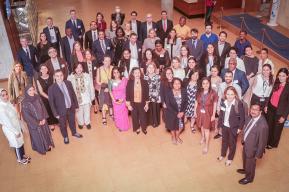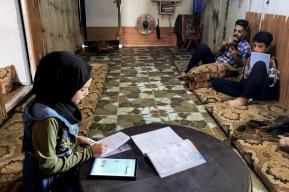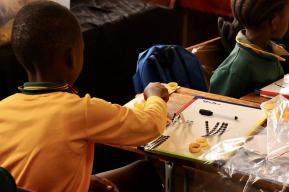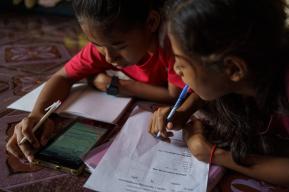Press release
244M children won’t start the new school year
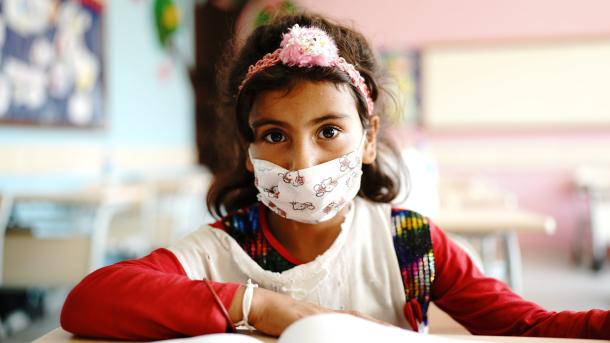
Paris, 1 September 2022 – As the new school year begins in many parts of the world, new UNESCO data shows that 244 million children and youth between the ages of 6 and 18 worldwide are still out of school. Audrey Azoulay, Director-General, calls for collective mobilization to ensure that the right of every child to access quality education is respected.
A new school year is starting in many parts of the world. This news should bring us joy, but it also reminds us that strong inequalities persist in access to education: 244 million of children are still out of school. No one can accept this situation. Education is a right and we must do everything to ensure that this right is respected for every child.

The new estimates, published online, show that sub-Saharan Africa remains the region with the most children and youth out of school, with a total of 98 million children. It is also the only region where this number is increasing: out-of-school rates are falling more slowly than the rate at which the school-age population is growing. The region with the second highest out-of-school population is Central and Southern Asia, with 85 million. The data per country is available in interactive visualizations on the website.
Strong concerns about global goals
In view of these results, the objective of quality education for all by 2030, set by the United Nations, risks not being achieved. We need a global mobilization to place education at the top of the international agenda

The Director-General will renew this call at the Transforming Education Summit to be held on September 19 convened by the UN Secretary General, which will bring together Heads of State and Government.
The gender gap is closing
The new UNESCO estimates confirm that the difference in the rate of girls and boys out of school has been globally resolved. The gaps of 2.5 percentage points among primary school age children worldwide and of 3.9 percentage points among upper secondary school age youth in 2000 have been reduced to zero – however, regional disparities persist.
New method for more efficient figures
Multiple data sources – including information from surveys and censuses – hve been cross-referenced by UNESCO Institute for Statistics (UIS) and the Global Education Monitoring (GEM) Report experts, to get a figure as close as possible to reality. It is the first time that this methodology, previously used to estimate flagship health indicators, has been used in education, marking a significant improvement in the robustness of the estimates.
Important data gaps have been filled in countries that have large out of school numbers but where no administrative data of good quality has been available for over a decade, such as Nigeria which has an estimated 20.2 million children and youth out of school, Ethiopia (10.5 million), the Democratic Republic of Congo (5.9 million) and Kenya (1.8 million).
With UNESCO’s help, 90% of countries have now set national benchmarks to assess progress towards quality education for all by 2030, including on out-of-school rates.
***
Media Contacts
Clare O'Hagan, UNESCO press office, c.o-hagan@unesco.org, +33 1 45 68 17 29
Note to editors
About the data:
The report gives the most accurate and comprehensive measure of the numbers of children and young people excluded from education. To assist the education community in choosing the right questions and finding the corresponding answers, the complete set of out-of-school rate results have been made available by the UNESCO UIS and GEM Report teams on VIEW. The website makes available out-of-school rates and numbers at global, regional and national level.
The model estimates aim to update the regional and global figures and the country figures for which data has not been available to date. They do not replace the country out-of-school data that UIS reports twice a year.
Definition:
Out-of-school rate is the “proportion of children and young people in the official age range for the given level of education who are not enrolled in pre-primary, primary, secondary or higher levels of education” (UNESCO Institute of Statistics, 2022). The importance of this indicator is quite clear: to achieve universal education as specified by SDG 4, the out-of-school rate must be reduced to zero.
About UNESCO’s Global Education Monitoring Report
The Global Education Monitoring Report (GEM Report) is developed by an independent team and published by UNESCO. It has the official mandate of monitoring progress in meeting the Sustainable Development Goal on education, SDG 4.
About the UNESCO Institute for Statistics
The UNESCO Institute for Statistics is the statistical office of UNESCO and is the UN depository for cross-nationally comparable statistics on education, science and technology, culture, and communication.



